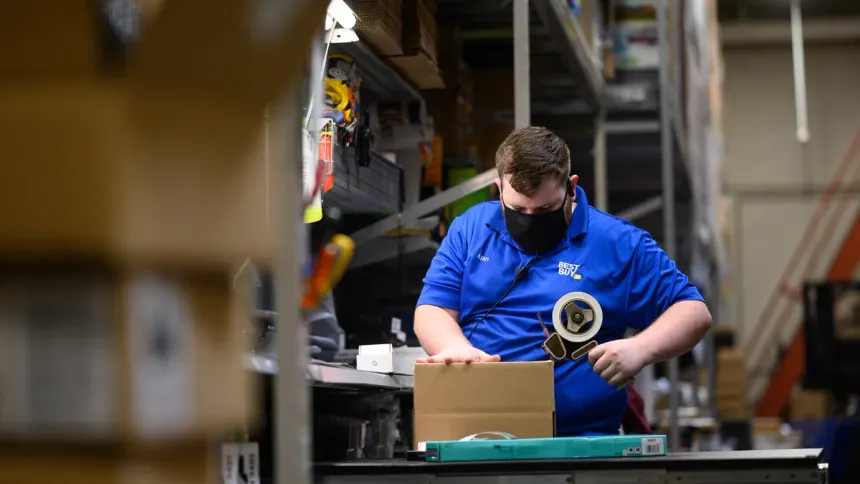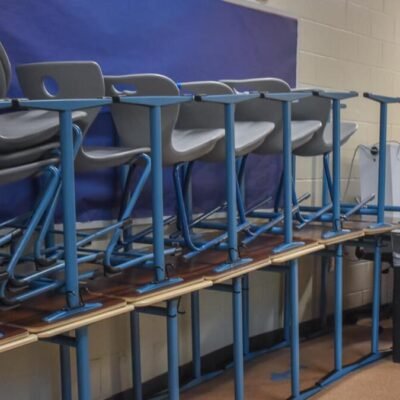Off-price retailers are facing a major shift in the way they source products. With increasing tariff concerns on imported goods, many are turning to domestic suppliers to maintain competitive prices and steady inventory. This change could significantly impact the retail landscape in 2025 and beyond.
The Growing Concern: Tariffs on Imports
Rising Costs for Imported Goods
- Governments worldwide have been increasing tariffs on imports, making it more expensive for retailer to source products from international suppliers.
- The U.S. has seen trade tensions with major manufacturing hubs like China, leading to higher duties on clothing, footwear, and electronics.
- This increase in costs could force off-price retailer to either raise prices or find alternative sourcing methods.

Unpredictable Supply Chains
- Global supply chains have become more volatile due to factors like trade disputes, shipping delays, and political instability.
- Retailers relying on imports may struggle with unpredictable delivery times and fluctuating costs.
- Sourcing domestically can provide more stability and reliability, allowing retailer to avoid major disruptions.
The Shift to Domestic Sourcing
Why Retailers Are Looking Closer to Home
- Lower Risks: Domestic sourcing helps avoid tariff hikes, reducing unpredictable costs.
- Faster Delivery: Shorter supply chains mean quicker restocking, helping meet consumer demand more efficiently.
- Support for Local Businesses: Partnering with local manufacturers can boost the economy and create jobs.

Brands Leading the Change
- Several major off-price retailers, including TJ Maxx, Ross, and Burlington, have started increasing their domestic sourcing efforts.
- Smaller brands and independent retailers are also exploring local production to maintain affordability.
- Companies that adapt early may gain a competitive advantage as tariffs continue to impact imports.
Benefits of Domestic Sourcing for Off-Price Retailers
1. Better Cost Control
- While domestic manufacturing may have higher labor costs, retailers can avoid unexpected tariff hikes and expensive overseas shipping fees.
- Predictable pricing from local suppliers allows for better financial planning.
2. Improved Inventory Management
- Faster production cycles mean retailers can quickly adjust to consumer trends.
- Reduced dependence on international shipping minimizes stock shortages and lost sales.
3. Increased Consumer Appeal
- Many shoppers prefer products made locally due to perceived quality and ethical production practices.
- “Made in USA” labels, for instance, can attract buyers who prioritize domestic products.
- Sustainable and locally sourced goods align with the rising trend of conscious consumerism.

Challenges and Risks of Domestic Sourcing
1. Higher Production Costs
- Labor and material costs in domestic markets are often higher than in low-cost manufacturing countries.
- Retailers must find ways to balance affordability without compromising profit margins.
2. Limited Supplier Networks
- Many domestic manufacturers are still growing their capacity, making large-scale sourcing a challenge.
- Building relationships with reliable local suppliers takes time and effort.
3. Consumer Price Sensitivity
- If costs increase too much, off-price retailers may struggle to maintain their appeal to budget-conscious shoppers.
- Competitive pricing remains key, even with domestic sourcing strategies.
The Future of Off-Price Retailing
1. Hybrid Sourcing Strategies
- A mix of domestic and international sourcing may be the best approach for retailers moving forward.
- Diversifying suppliers helps mitigate risks and maintain affordability.
2. Government Support & Incentives
- Policymakers may introduce tax benefits or grants to encourage local production.
- Retailers should keep an eye on potential policy changes that could make domestic sourcing more attractive.
3. Technology & Innovation
- Automation and AI-driven inventory management can make domestic production more cost-effective.
- Retailers investing in smart manufacturing solutions may gain a long-term advantage.
Conclusion
The retail industry is evolving rapidly, and off-price retailers must adapt to the changing landscape. With increasing tariffs on imports, domestic sourcing presents an opportunity for businesses to stabilize costs, improve inventory management, and appeal to consumers who value locally made products. However, challenges remain, and a balanced sourcing strategy will be crucial. As 2025 approaches, retailers that embrace this shift strategically could see significant growth in an increasingly uncertain market.
Do Follow USA Glory For More Updates.






